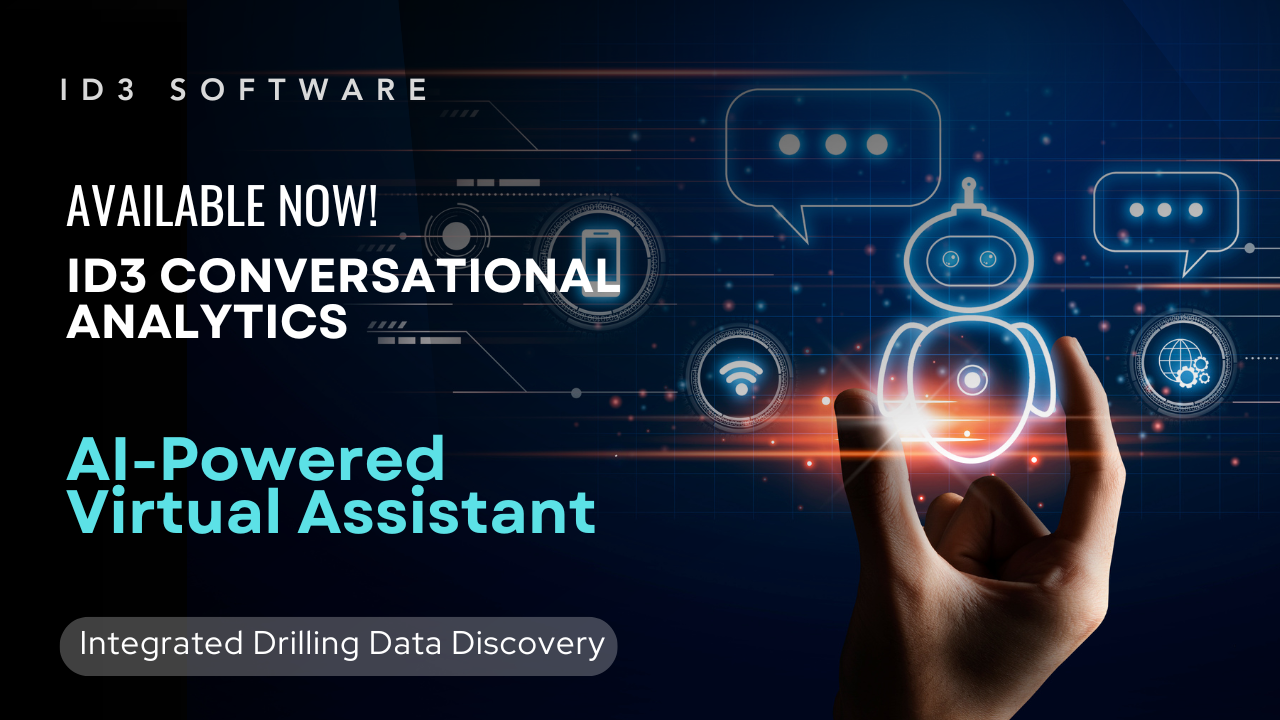ID3 Launches AI Virtual Assistant

ID3 has taken a major step forward with the launch of its AI-powered conversational analytics, transforming how drilling teams access and interpret their operational data. This new feature is currently available in the main ID3 modules: ID3 Benchmark and ID3 Reporting, making it easier than ever for teams to get actionable insights from all areas of their operations.
Chat Directly with Your Data
Drilling engineers routinely require rapid insights from fragmented data sources or across multiple wells to improve drilling performance. Accessing offset well data is particularly critical, yet even with advanced tools such as ID3 Multiwell Benchmark, users often need to manually navigate through different pages and interfaces to collect all the required information. The new AI Virtual Assistant eliminates this challenge.
Engineers can now chat directly with their operational data using a built-in AI Virtual Assistant in the main ID3 modules – Benchmark and Reporting. Complex drilling analytics are transformed into straightforward conversations, so critical information is accessible in seconds. Instead of navigating multiple dashboards or writing complex SQL queries, users can type questions in plain English and get instant, meaningful answers.
Get Instant Insights
With the AI- Virtual Assistant, you can:
- Ask questions about well performance in plain English, Spanish and Arabic
- Get instant insights into Non-Productive Time and drilling metrics
- Compare operations across multiple wells effortlessly
- No technical training is required - just ask, and the system delivers the answers.
Built for Smarter Decisions
Behind the scenes, the system uses advanced AI to understand context, pull information from multiple data sources, and present results clearly within the Multiwell environment. Our implementation leverages LangGraph to orchestrate multi-step, multi-agent workflows; LangChain for text-to-SQL generation and execution; and OpenAI’s LLM for query synthesis and explanation.
Key innovations include:
- A schema- and domain-aware prompt filtering method that selects relevant tables and few-shot examples to reduce hallucinations.
- A database agent with manual control and safeguards against unintended operations.
- Context management mechanisms that enforce data-access boundaries, ensuring users only retrieve authorized information.
By simplifying data access and interpretation, engineers can focus on making faster, smarter decisions rather than spending time wrangling data.

